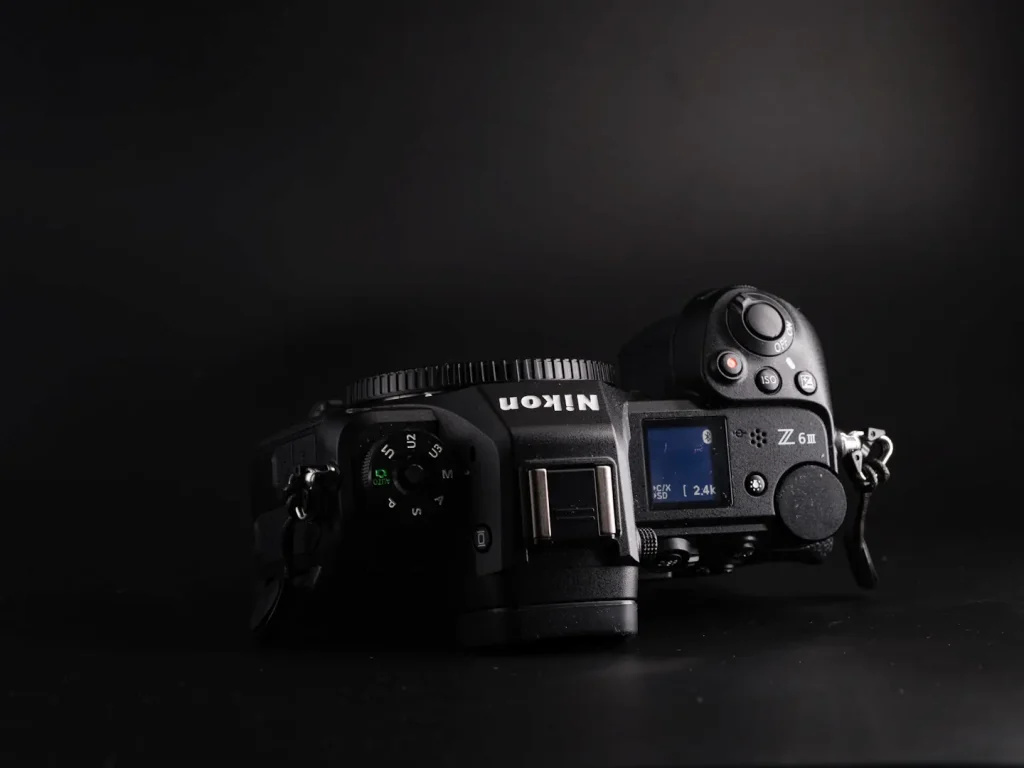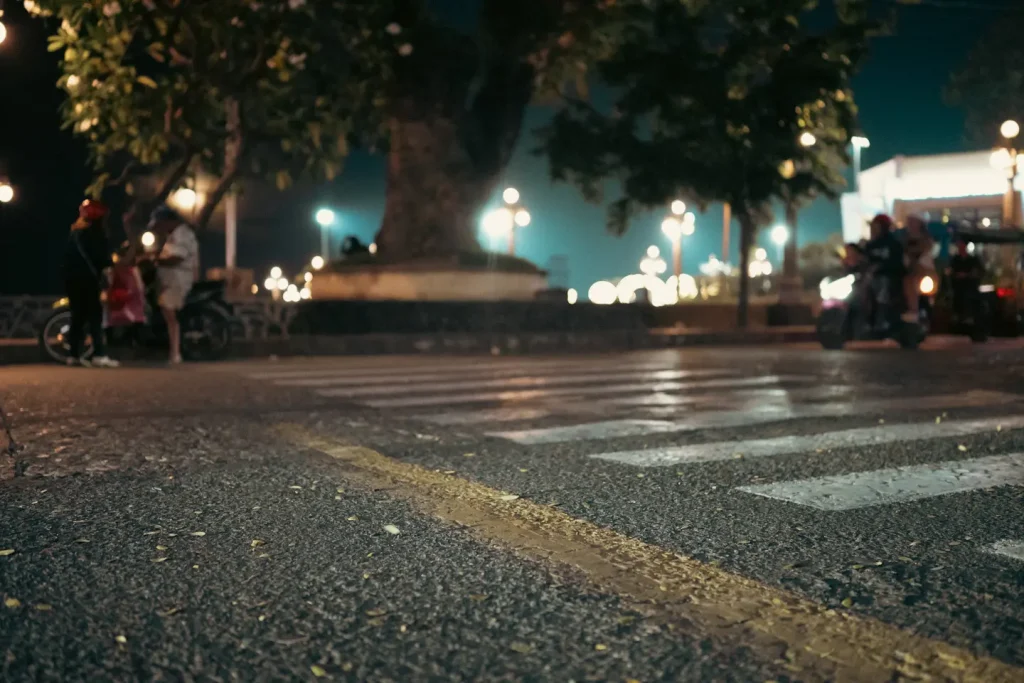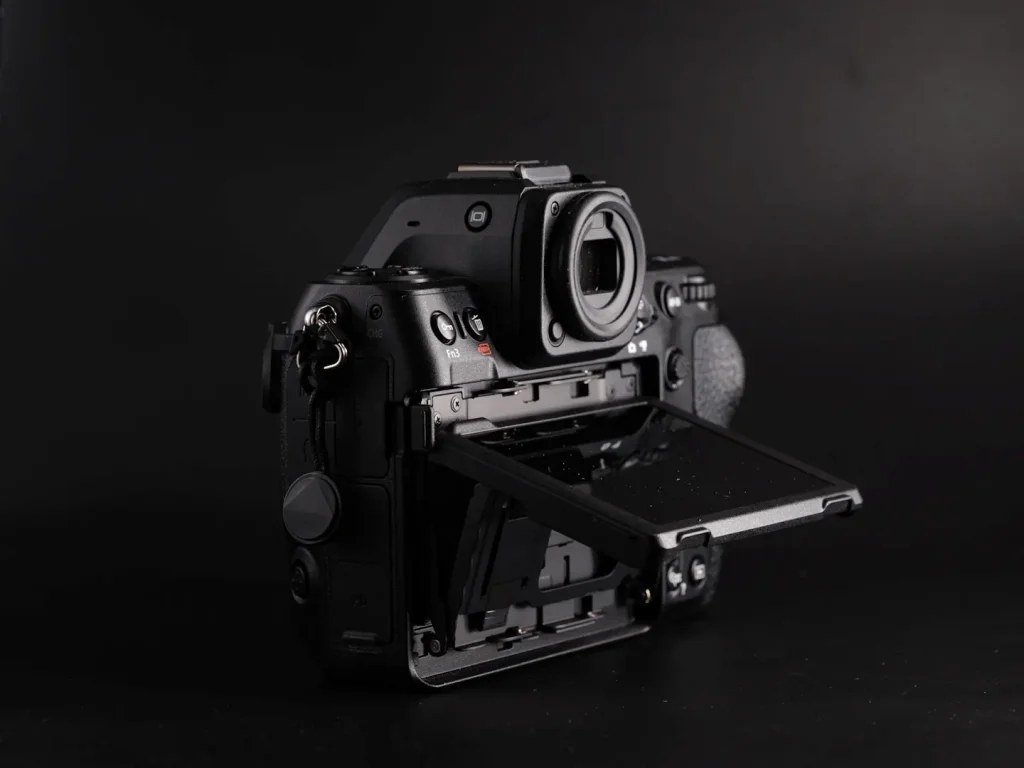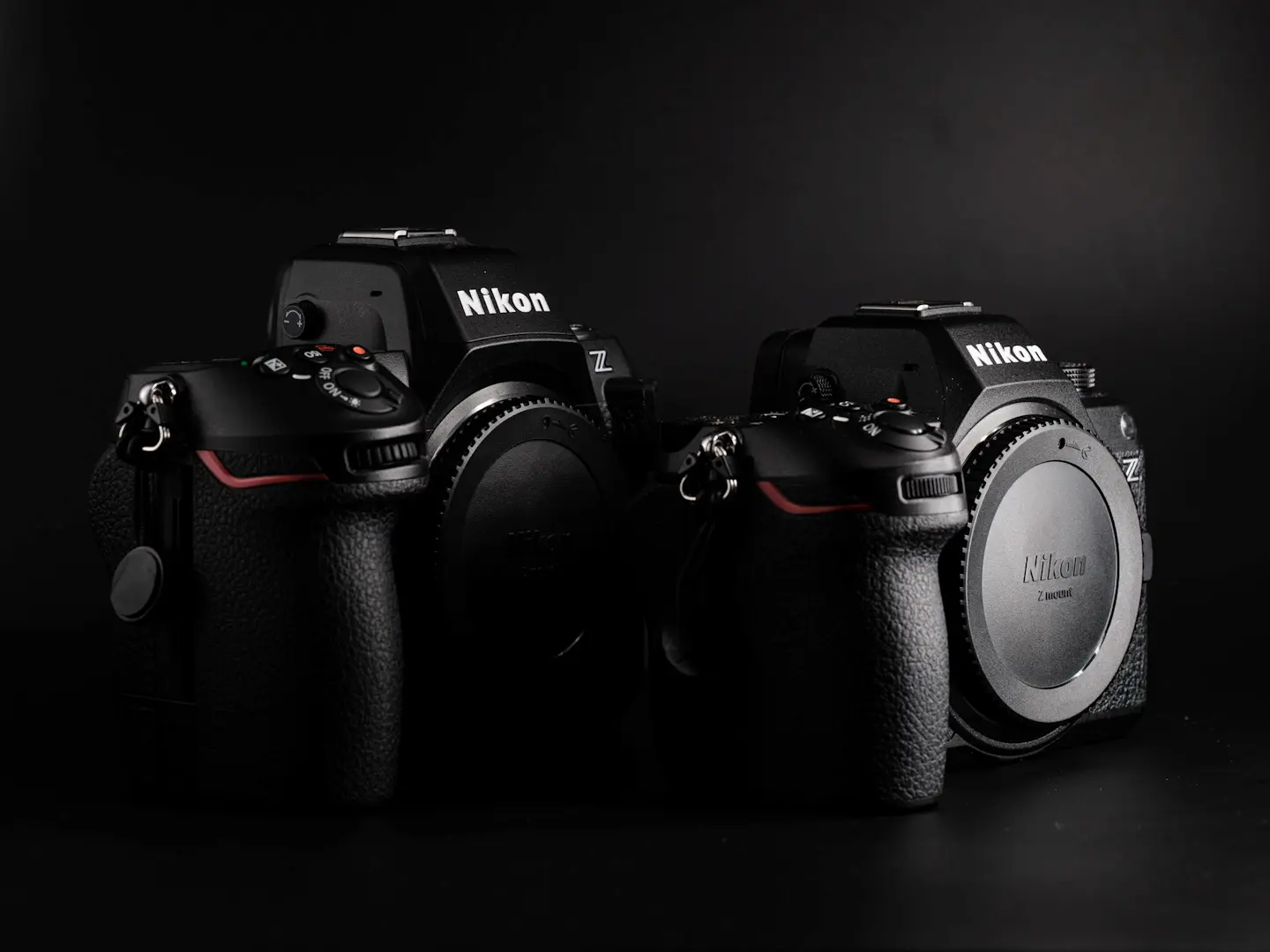Ever since the Nikon Z8 was announced, I’ve had this nagging desire to own it. You know that feeling — when a camera just gets under your skin. On paper, it looked like the perfect tool: high resolution, a full-frame sensor, class-leading autofocus, and those brilliant Nikon ergonomics — all in a rugged, weather-sealed body that was smaller and lighter than the Z9.
But as much as I wanted the Z8, I couldn’t quite shake the thought that maybe I didn’t need it. Then along came the Nikon Z6III — a more affordable camera that seemed to offer most of the same magic, only in a smaller, lighter body with a little less resolution.
Fast forward to now, and I actually own both. I’ve shot them side by side in the real world, from quiet family moments to fast-moving scenes, and I’ve learned exactly where each camera shines — and where spending extra simply isn’t worth it. That’s what I want to share with you in this article.
TL;DR – Nikon Z6III vs Z8
- Performance: Both are excellent. The Z8’s eye AF is a fraction quicker and more “sticky”, but the Z6III is close behind.
- Build & Handling: Z6III is lighter and more compact; the Z8 feels more substantial and better balanced for long sessions.
- Image Quality: Z8 offers more detail and cleaner ISO 64 files; Z6III performs better in low light with less noise at higher ISOs.
- Usability: Z6III’s C1–C3 modes are simpler; Z8’s memory banks are deeper but fussier. Z8 wins for illuminated buttons and 3-way tilt LCD.
- Best For: Z6III – travel, portraits, family, and general use. Z8 – professionals or anyone needing maximum reliability and resolution.
Bottom line: The Z6III delivers roughly 80% of the Z8’s performance at around half the price. Unless you need the Z8’s extra speed, resolution, and ruggedness, the Z6III will more than satisfy.
This article contains affiliate links. If you purchase through these links, I may earn a small commission at no extra cost to you. It helps support the site and keeps the content ad-free for readers. Thank you for your support.
Key Differences at a Glance
Nikon Z6III vs Z8 – Key Specifications
| Specification | Nikon Z6III | Nikon Z8 |
|---|---|---|
| Sensor | 24.5MP Partially-stacked Full-Frame CMOS | 45.7MP Stacked Full-Frame CMOS |
| Processor | EXPEED 7 | EXPEED 7 |
| ISO Range | 100–64 000 (exp. 50–204 800) | 64–25 600 (exp. 32–102 400) |
| Burst Shooting | Up to 20 fps RAW / 120 fps JPEG | Up to 20 fps RAW / 120 fps JPEG |
| Autofocus System | 493-pt hybrid with subject detection | 493-pt hybrid with subject detection |
| Viewfinder | 5.76 M-dot OLED @ 120 fps | 3.69 M-dot OLED @ 60 fps |
| Rear Screen | 3.2″ 4-axis tilt LCD (2.1 M dots) | 3.2″ tilt LCD (2.1 M dots) |
| Video | 6K 60p N-RAW / 4K 120p 10-bit internal | 8K 60p N-RAW / 4K 120p 10-bit internal |
| Body Construction | Magnesium alloy, weather-sealed | Magnesium alloy, weather-sealed |
| Weight | Approx. 750 g (body only) | Approx. 910 g (body only) |
Where to Buy
Check the latest prices and availability for both cameras below.
Check Prices – Nikon Z6III Check Prices – Nikon Z8As an Amazon Associate, I may earn from qualifying purchases at no additional cost to you.
Design, Handling & Build Quality

The Nikon Z6III feels compact and rugged — very much in line with my OM System OM-1 Mark II. The grip is beautifully sculpted and comfortable enough for all-day shooting, while the buttons have a reassuring click and excellent haptic feedback. Nikon has opted for the more consumer-friendly C1-C3 custom modes on the PASM dial, which makes it easy to set up presets for your most common subjects. The 5.76-million-dot EVF is a standout feature — expansive, crisp, and with a fast refresh rate that feels almost cinematic. The fully-articulating rear LCD will please hybrid shooters, and the overall body feels impressively light for full frame. If I have one small complaint, it’s that the body is just a touch short; my pinky finger tends to dangle in no man’s land beneath the grip.

By contrast, the Nikon Z8 feels more substantial — a little heavier, yes, but also more serious in its build. The grip is near-perfect for my small-to-medium hands, offering just the right amount of surface area to feel like an extension of my hand rather than a tool I’m holding. It inspires confidence the moment you pick it up. The Z8’s buttons have that same crisp feel as the Z6III’s but with a few more at your disposal, including a dedicated autofocus-mode button on the left side that’s genuinely useful in fast-changing situations.
The Z8 also trades the Z6III’s C1-C3 dial for Nikon’s professional-grade memory banks, allowing far deeper customisation for different shooting scenarios. Its EVF, while lower in resolution at 3.69 million dots, is bright, blackout-free, and a pleasure to use. The three-way tilt LCD design might not rotate for video work, but for stills photography I actually prefer it — it’s quicker and less obtrusive when shooting from high or low angles.
Both cameras feel exceptionally well built, but if I had to take one into truly extreme conditions, it would be the Z8. In fact, during the aftermath of a recent typhoon, that’s exactly what I did. It’s the camera I instinctively reached for — a reliable workhorse that feels capable of handling whatever you throw at it, both in subject matter and in weather.
In short, the Z6III delivers about 80 percent of the Z8’s performance in a smaller, lighter, and more travel-friendly form. The Z8, meanwhile, is the camera you grab when you need absolute reliability — the one that feels like it can take a beating and come back asking for more.
Performance & Autofocus

In real-world shooting, both cameras are excellent. Whether I’m photographing street scenes, family moments, or travel, there’s very little between them in terms of pure autofocus performance. The only consistent difference I’ve noticed is that when using eye AF, the Z8 feels just a little quicker to pick up the subject and slightly more “sticky” in maintaining focus. It’s subtle, but if you shoot both cameras back to back, you notice it.
Switching between autofocus options is also faster on the Z8 thanks to the dedicated AF button on the left side of the body. You can assign a similar function to one of the Z6III’s custom buttons, but it never feels quite as intuitive or immediate. In terms of hit rate, the Z8 edges ahead slightly — maybe 95% versus 90% for the Z6III — not a dealbreaker by any stretch, but noticeable in demanding situations.
One quirk worth mentioning: the Z8 doesn’t have a physical shutter, relying entirely on an electronic one. The sound it produces is… underwhelming, especially for a camera of its stature. The Z6III, by comparison, has a more satisfying and traditional shutter sound that gives you that tactile sense of shooting. It’s a small detail, but one that makes the Z6III more enjoyable in quiet or deliberate moments.
For most photographers, both cameras will do everything you need in terms of AF speed and reliability. The Z8 gives you that extra fraction of confidence when chasing fleeting moments, but the Z6III is no slouch — it’s a camera you can still trust to deliver nearly every shot.
Image Quality & Sensor Character

The most obvious difference between these two cameras is resolution — and you can see it straight away. The Z8’s 45.7MP sensor delivers noticeably more detail and flexibility to crop in, which makes it especially valuable if, like me, you mostly shoot primes. That extra resolution also lets you print roughly a size larger before quality starts to fall off, and it makes the DX crop mode genuinely usable in practice.
But the difference in image quality isn’t just about megapixels. The Z8’s base ISO of 64 produces cleaner, more refined files than the Z6III’s base ISO 100, with tonality that edges surprisingly close to what I see from my GFX system. If you’re a landscape shooter, or you regularly work in bright light, that cleaner base ISO can make a real difference.

The flip side is that the Z6III performs better at higher ISOs. Its 24.5MP sensor produces visibly less noise in low light, and skin tones at ISO 6400 and above look smoother and more natural. When you downsize Z8 files to match the Z6III’s resolution, the gap narrows, but straight out of camera the Z6III retains a small edge in high-ISO usability — perhaps half to one stop.
Dynamic range between the two is effectively a draw, with both offering more than enough flexibility for anything I shoot. In everyday use, I slightly prefer the look of Z8 files at lower ISOs — but once the light drops, the Z6III becomes the more dependable choice.
If I were shooting landscapes, or wildlife, I’d reach for the Z8 every time. For portraits or low-light work, the Z6III is the one that delivers the cleaner, more forgiving files. Both are excellent — they just shine at opposite ends of the ISO range. For general use, it’s a case of deciding, do you want the extra detail and flexibility of the Z8 files with the additional hard drive and processing requirements or is 24mp sufficient for you.
Features & Usability
The Nikon Z8’s professional-level memory banks allow for much deeper customisation than the Z6III’s consumer-style C1–C3 modes. In theory, they’re great for pros who constantly adapt to changing light and need the camera to keep up — you can pick up exactly where you left off, with all your last adjustments intact. In practice, though, they’re not quite as refined as they could be.
I’d love to see Nikon merge the standard and extended menu banks to make switching settings faster, and add an option to lock banks so they always revert to your original setup. As it stands, it’s easy to forget you made changes mid-shoot, turn the camera back on later, and find yourself shooting with completely inappropriate settings. Naming each bank is helpful, but if you want to restore your baseline setup, you either have to do it manually or reload from a memory card — a bit of a faff for what should be a simple process.
By comparison, the Z6III’s simpler C1–C3 custom modes feel far more intuitive. I can set up three straightforward configurations — say, landscape, portraits, and street — and know exactly what I’m getting each time. They may not be as flexible, but they’re faster and more reliable in real-world use.

As for displays, both cameras have excellent EVFs. On paper, the Z6III’s 5.76M-dot viewfinder is technically superior, but when shooting back-to-back, I honestly don’t notice a meaningful difference. The LCD, however, is a clear win for the Z8. Its three-way tilting design is simply more practical for stills — it lets you tilt up or down in landscape orientation without swinging the screen to the side, making it both quicker and more discreet in use.

The Z6III’s shutter has a more satisfying feel and sound, while the Z8’s is meek by comparison — a small but noticeable difference that affects the shooting experience. Both cameras feature dual card slots (CFexpress Type B + SD), offering plenty of speed for high frame rates up to 120fps JPEG or 20fps RAW.
The Z8 pulls ahead slightly in usability refinements. Its larger top LCD is easier to read and automatically lights up when you turn the camera on — a real help in low light — and the illuminated rear buttons are a godsend for night shooting. The Z6III’s smaller top display gets the job done but requires a separate button to light it, and the buttons on the back aren’t illuminated. The Z8 offers more function buttons which come in handy.
Overall, both cameras feel familiar and easy to live with, but the Z8 edges ahead in thoughtful touches that make it more versatile in demanding conditions.
Price, Value & Who Each Is For
When it comes to value, the Nikon Z6III is hard to beat. The difference in cost between it and the Z8 simply isn’t reflected in real-world performance. You’re getting a camera that delivers around 80% of the Z8’s capability for roughly half the price, and that makes it one of the best-value full-frame cameras on the market right now.
If you’re exploring other full-featured cameras that balance performance and value like these two, you might enjoy my Best Full-Featured Cameras in 2025 That Won’t Break the Bank guide — it’s a great reference for understanding where the Z6III fits in today’s market.
That’s not to say the Z8 doesn’t represent good value too — quite the opposite. Compared to its competition from Canon and Sony, it still offers an incredible amount of performance for the money. If you know you need what the Z8 offers, you won’t regret buying it. Of all the cameras I own, it’s the one I’d reach for if I absolutely had to get the shot in tough conditions. The autofocus is brilliant, the handling is near-perfect, and the files it produces are stunning. It’s a camera that feels every bit as professional as its reputation suggests, and it’s worth every single dollar for those who will truly use what it offers.
But for most photographers, the Z6III simply makes more sense. It’s smaller, lighter, easier to travel with, and perfectly suited to family, portrait, and general photography. The performance gap is far smaller than the price gap, and unless you have very specific needs, the Z6III will more than deliver.
If I could only keep one, it would be the Z8 — but if I had to live with the Z6III instead, I wouldn’t be disappointed for a second. It’s one of those rare cameras that gets almost everything right, and it proves just how far Nikon has come in making professional-level performance accessible to almost everyone.

